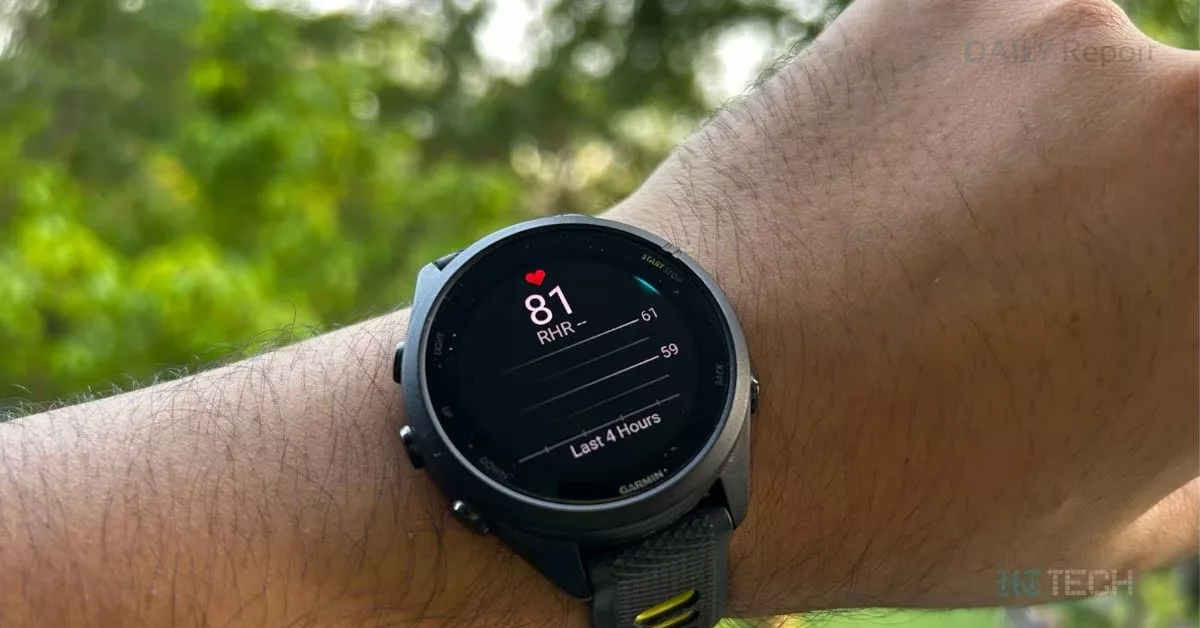Garmin Forerunner 265S review
Garmin Forerunner 265S
A couple of years ago if someone had asked me if and when Garmin would launch a running watch with AMOLED display, I would have said, “Are you kidding me? No. That’s not happening. Not in a million years.” Even though I would secretly hope and pray that it would. Pros who are truly, deeply invested in these watches may not share the same sentiment— and that is okay— but crazier things have happened. Even this could happen, someday, I would say to myself. And what do you know, it has finally happened today.
Garmin has launched not one but, get this, THREE running watches with colourful AMOLED screens. The line-up is headlined by the Forerunner 965 that costs a whopping Rs 67,490. But it’s the relatively mid-range (for a Garmin) Forerunner 265 and 265S that are more interesting actually.
It is always nice to see Garmin dabble with entry-level stuff like this, gives you something to talk about aside from Apple, Samsung and even Fitbit every once in a while, you know, brands that often run away with 90 percent of the limelight in the mass market space. To be fair, Garmin has been trying to break into conversations through the course of this year, and it’s good to see such consistent focus from a brand that hardly needs any introduction, if you know what I mean.
Garmin Forerunner 265S: Display and battery life
The Forerunner 265 and 265S cost exactly the same – Rs 50,490— to no one’s surprise because they’re virtually the same watches with different sizes. The 265S, as you can probably tell, is smaller. It has a 1.1-inch display centred around a 42mm dial and uses 18mm silicone bands. The 265 on the other hand comes with a 1.3-inch screen around a 46mm dial and uses 22mm bands.
The difference in size of course leads to slightly different proportions but generally speaking, they’re typical running watches which is to say they’re both extremely light (the 265S weighs only 39g, the 265 just 47g) and comfortable to wear all day: outdoors is a given but being small (and lightweight) also means, you can wear them to bed with barely a hiccup.
The AMOLED panel is obviously the biggest draw if you’re into that sort of thing. You see most— if not all— Garmin watches have MIP (short for memory-in-pixel) displays which is a big deal for their intended TG. It gives you excellent outdoor legibility particularly in direct sunlight without hogging battery life. That’s a big reason why Garmin watches can go on and on for multiple weeks if not months on a single charge. But AMOLED has its own advantages.
Technicalities aside, it’s more colourful and modern to look at. Your interactions are more fluid. Animations are more life-like. Not to mention, it allows Garmin to add always-on to these watches and— also— make them touchscreen.
Before you ask, Garmin isn’t chucking out physical buttons. You still get to experience the clickety-clack of 5 of those which is satisfying beyond reason and an option to disable the touchscreen altogether, for when you are working out. You might think it’s an unnecessary feature, but it’s always nice to have more of a good thing rather than not having it at all, and wonder what might-have-been. If the phrase best of both of worlds was a thing, the 265 and 265S would be it. They work as well for casual everyday use as they do on a race track.
Battery life with always-on is to-die-for. Depending on usage, you can average anywhere between 5-7 days on the 265S with, and this is the thing to pay attention to, multiple (we’re talking 4-5 at least) HOURS of multiband GPS workouts. Garmin itself quotes a very conservative 5-day estimate but it has absolutely no problems beating that number more often than not.
Without always-on, the 265S is rated for 15 days of use. It goes without saying that this puts to shame any Samsung Galaxy Watch, Apple Watch, or even a Fitbit and blows them out of the ball park on any perceivable longevity parametre. Basically, with the 265S you can have your cake and eat it too (no pun intended).
The 265S may not give you the same level of “smart” as an Apple Watch or Samsung Galaxy Watch do, each on their own, but being platform-agnostic means it plays well with both Android and iPhone. You can receive notifications (though quick responses are only available on Android), set timers, and even store offline music from Spotify and Amazon Music on it (the watch comes with 8GB default storage). Safety features like Incident Detection and LiveTrack ensure some peace of mind, too. The list just goes on and on.
Garmin Forerunner 265S: Verdict
On its own, the Forerunner 265S is a great running watch, one that also tells you how both Apple and Samsung have been taking us for a ride all this time. Turns out, it is possible to have a top-shelf always-on AMOLED display and fantastic battery life to go with it, too, in one package. Add to that a behemoth feature set, virtual training sessions included at no extra cost, and you get a value proposition like no other.
Still, because this is a review, I’m supposed to –also – tell you that take the AMOLED screen away and the 265S is pretty much the same as the 255S and that’s currently selling for Rs 44,990, that’s 5,500 less than the 265S (you can get the 255S for as low as Rs 39,490 if you go for the non-music edition). Depending on how you’re placed, both offer terrific bang for the buck at their respective price points. But if there’s even the slightest chance you can stretch your budget, the 265S is a no-brainer, that’s so good, one might say— shut up and take my money Garmin!







